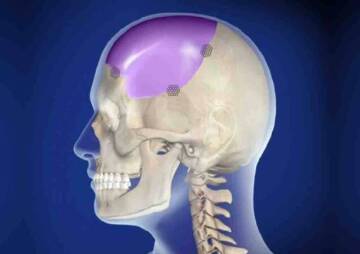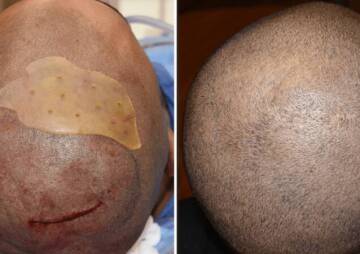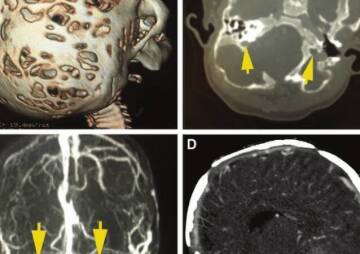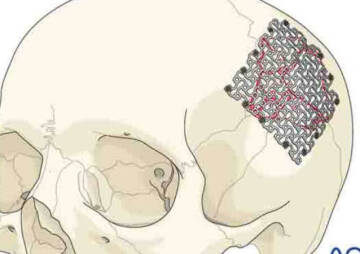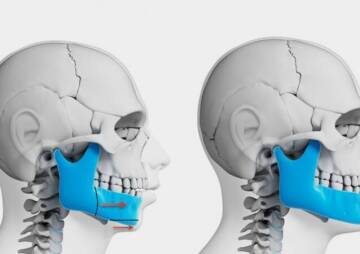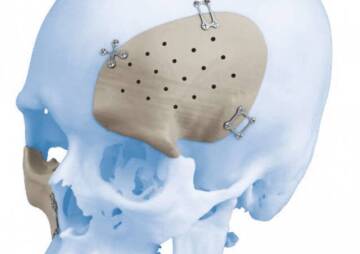-
Category
Craniomaxillofacial Surgery
Orthopedic Surgery
Spine Surgery
Orthopedic Implants
Hip Surgery
Knee Surgery
Pectus Excavatum
Bone Graft
Disinfectants
Healthcare
7 most common types of craniofacial surgery
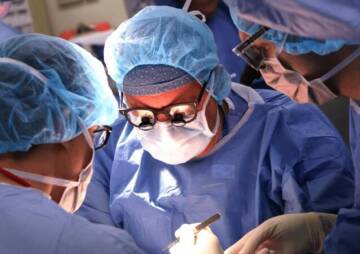
There are different types of craniofacial surgery such as cleft lip, cleft palate, craniosynostosis, surgery to enlarge or reposition the midface, distraction osteogenesis, hemifacial microsomia, vascular malformation, hemangioma, deformational (or positional) plagiocephaly. Some of the most common types of craniofacial surgery introduced in this post.
Craniofacial surgery treats abnormalities or deformities that mostly affect the area of the head and face. However, it is not a big area but it includes several types of craniofacial surgery. Craniofacial abnormalities that require surgery not only weaken the functions of our senses, severe craniofacial abnormalities typically have psychosocial consequences which can be more troublesome. Individuals with severe craniofacial abnormalities are often rejected by their social environment and are limited due to their facial deformities.
Do you know enough about common types of craniofacial surgery and craniofacial surgical procedures? If not, stay in the know with health news center.
What is craniofacial definition?
Craniofacial is generally used to describe the whole part of the mouth, jaws, face, skull and other related structures. However this is a small area of the body but it is very complicated and It has remarkable effects on how you see, hear, breathe, chew, swallow and even on how your brain grows.
Congenital and acquired craniofacial deformities
Craniofacial abnormalities or deformities are grouped into two categories, congenital and acquired.
Congenital craniofacial deformities are commonly due to genetic mutations or deficiency of folic acid in the mother during pregnancy. These abnormalities affect the growth of the head and facial bones. Trauma, disease or surgeries cause acquired craniofacial deformities.
Most common types of craniofacial surgery
Craniofacial surgery is related to both kinds of deformities, congenital and acquired. Craniofacial surgery is not tissue-specific, craniofacial surgeons deal with bone, skin, nerve, muscle, teeth, and other associated anatomy.
There are different types of craniofacial surgery such as cleft lip, cleft palate, craniosynostosis, surgery to enlarge or reposition the midface, distraction osteogenesis, hemifacial microsomia, vascular malformation, hemangioma, deformational (or positional) plagiocephaly.
Some of the most common types of craniofacial surgery include the following:
1. Cleft lip and cleft palate
Cleft lip and cleft palate are the most common congenital craniofacial anomalies at birth.
A cleft lip includes an opening in the upper lip that may extend into the nose. The degree of the cleft lip can vary greatly, from mild (notching of the lip) to severe (large opening from the lip up through the nose).

Cleft palate occurs when the roof of the mouth includes an opening into the nose. It can extend from the front of the mouth (hard palate) to the throat (soft palate). The cleft may also include the lip.
There are a variety of techniques that may be used to repair a cleft lip and cleft palate but cleft palate requires more complex approach. Cleft lip treatments start earlier than cleft palate.
Many people with cleft lip and palate have one or more missing teeth. Additionally, their teeth adjacent to the cleft often have a deficiency of supporting bone. In these instances, osseointegrated implants are the most effective solution for replacing missing teeth.
Osseointegrated implants refer to placing implants into bones in which bony tissue is formed around the implant and anchors it in place and it is very common in facial implants.
2. craniosynostosis
Craniosynostosis is a condition in which the fibrous joints between the skull bones fuse too early. This can cause an abnormal head shape, or in some cases limit growth of the brain, that increases the pressure inside the skull.

There are multiple types of surgery utilized to treat craniosynostosis, such as strip craniectomy, spring-assisted craniectomy and cranial vault remodeling.
A crucial additional surgery is a cranio-maxillofacial implant with Polyetheretherketone (PEEK), there are different types of facial implants but PEEK implant could be a great choice because it restores normal symmetry and provides symptomatic relief and also PEEK implant provides excellent cosmetic results.
To know more about PEEK implants visit: "what is a peek implant?"
Except craniosynostosis surgery there are varieties of plastic surgery for skull reshaping. It is proper for those who are not satisfied with the shape of their skull such as individuals with flat heads.
3. Hemifacial microsomia
Hemifacial microsomia is a type of congenital disorder that has effects on the development of the lower half of the face.it has the most impact on the ear, mouth, and jaw areas. Sometimes, both sides of the face can be affected and might involve the skull and the face. After cleft lip and cleft palate hemifacial microsomia is the second common type of craniofacial abnormalities.

4. Vascular malformation
Vascular malformation presents at birth but it appears at different ages. It can cause functional or aesthetic problems. The results of vascular malformations are often from abnormal development in blood vessels, lymph vessels, veins, and/or arteries. There are several different types of malformations, and they are named according to which type of blood vessel is mostly affected.

5. Hemangioma
A hemangioma results in abnormal blood vessel growth in the skin that may be present at birth (faint red mark) or appear in the first or second week of life. A hemangioma might appear anywhere on the skin, but mostly appears on the face, scalp, chest or back. A single, small hemangioma usually does not need any treatment. It’ll likely subside on its own, but when it is in specific areas on the face such as lip needs treatment. The other case which requires surgery is when hemangioma grows too large or it is painful.

Mostly surgery of hemangioma is cosmetic rather than medical one.
6. Distraction osteogenesis
Distraction osteogenesis is a process used in surgeries such as orthopedic surgery and maxillofacial and craniofacial surgery. Through distraction osteogenesis surgeons make a long bone out of short one, so the bone is regenerated.

During the surgery a bone is cut, then a device which is named a distractor drags the two parts of the bone. After a couple of months new bone grows to fill the gap between two pars of the bone.
For midface distraction surgery, surgeons use a headframe device which is usually U-shaped. The surgeon fastens the device around the top of child’s head and attaches it with special orthopedic screws called “pins.”
After two or three weeks after surgery, while the child is at home, a caregiver turns one or more screws about one to two millimeters per day on the distractor. This moves the face bones apart. Then as it was mentioned new bone grows to fill in the gaps. It makes the bone to be in their right position.
When the new bone is strong, it is time to remove the distractor through a second operation.
7. Trigonocephaly
Trigonocephaly is a congenital abnormality refers to the triangular forehead. About 5% of craniosynostosis cases face with trigonocephaly. Trigonocephaly can be due to a specific syndrome or can be isolated. Syndromatic trigonocephaly is associated with various syndromes such as, Opitz syndrome, Muenke syndrome, Jacobsen syndrome, Baller–Gerold syndrome and Say–Meyer syndrome.

The treatment of trigonocephaly is surgical and it must be before the age if one. There are some individual techniques for the surgical treatment. The surgical procedure is taking place with the following techniques:
Fronto-supraorbital advancement and remodelling, Floating forehead technique, Suturectomy, Distraction osteogenesis, Minimal invasive endoscopic surgery.
What qualifications are required for a craniofacial surgeon?
A craniofacial surgeon needs several years of postsecondary education and a lot of training.
For the purpose of being a craniofacial surgeon, a medical student after graduation should complete a residency in general plastic surgery which takes at least two years. After getting a residency of plastic surgery, one more year is required to complete a craniofacial surgery fellowship.
nonsurgical treatment for craniofacial anomalies
There are some techniques which have revolutionized the treatment for craniofacial anomalies. As craniofacial surgery is a complicated surgery, it is very difficult to measure the actual success of the surgery, but for children with craniofacial abnormalities the right procedures at the right time can reduce the negative impact of these conditions on their growth, development, function and even on their social relationships.
We are going to provide an overview of nonsurgical treatment for cleft lip and palate, and hemifacial microsomia.
Nonsurgical treatment of cleft lip and palate
Children with cleft lip an palate can be treated without several surgeries. The nonsurgical technique for cleft lip and palate is called Nasoalveolar modeling.
Through this technique babies after a few weeks of birth are fitted with a plate that is similar to a dental retainer and it directs the growth of lip, nostrils and gums. The plate is comfortable an painless for babies so they adopt to its presence in a couple of days and wear it for almost 24 hours a day.
For most infants with cleft lip alone, it takes about 4-6 months to repair their abnormality, this means it is usually done at 4-6 months of age, but the exact length of time is estimated by babies' surgeon and orthodontist.
Cleft palate treatment takes longer period of time, it usually done between 10 to 18 months of age.
Nonsurgical hemifacial mirosomia treatment
Nonsurgical approach is suitable for cases who suffer from mild hemifacial microsomia,these patients can benefit from orthopedic and orthodontic treatment.
In orthopedic treatment a headgear which is high pulls and hybrid functional is used and also in order to acquire perfect occlusion a fixed orthodontic straight wire is used.
The purpose of nonsurgical treatment is to avoid invasive modality to treat hemifacial mirosomia.
Craniofacial surgery cost
Craniofacial surgery costs are effected by different aspects. One of the main key factors which has considerable effect on the surgery cost is complexity of the surgery and the second important factor is length of the procedure. Totally the costs of surgery are divided into three parts: the surgeon’s fee, hospital fee, and the last one is anesthesia fee.
If the surgery is considered as a medical surgery, the health care insurance can cover full or partially the cost of the surgery.
As craniofacial surgery is a complex multi-stage surgery, Health News Center is here to help you get informed about all you need to know about medical treatments and procedures.
We are looking forward to getting in contact with you.

